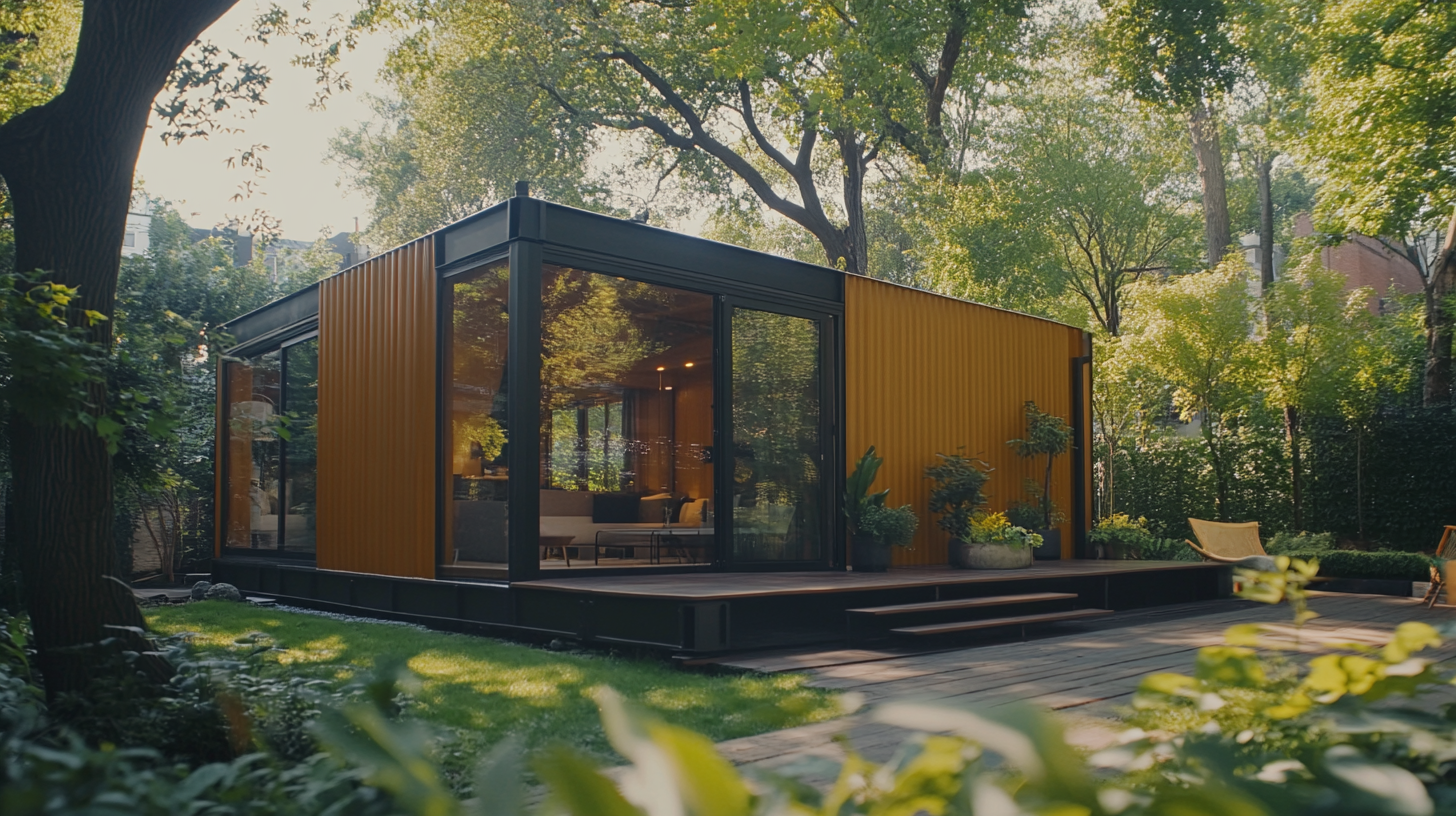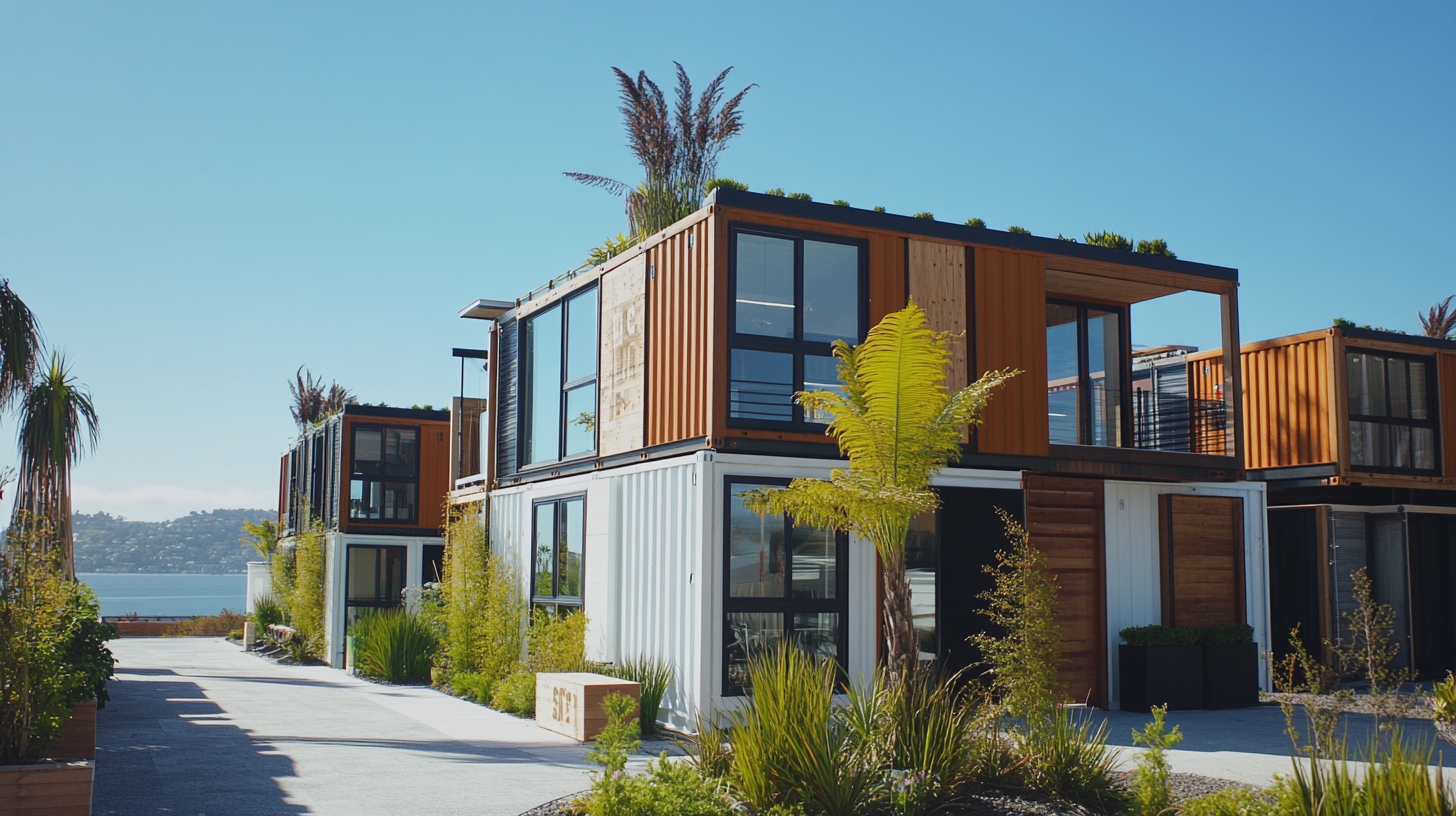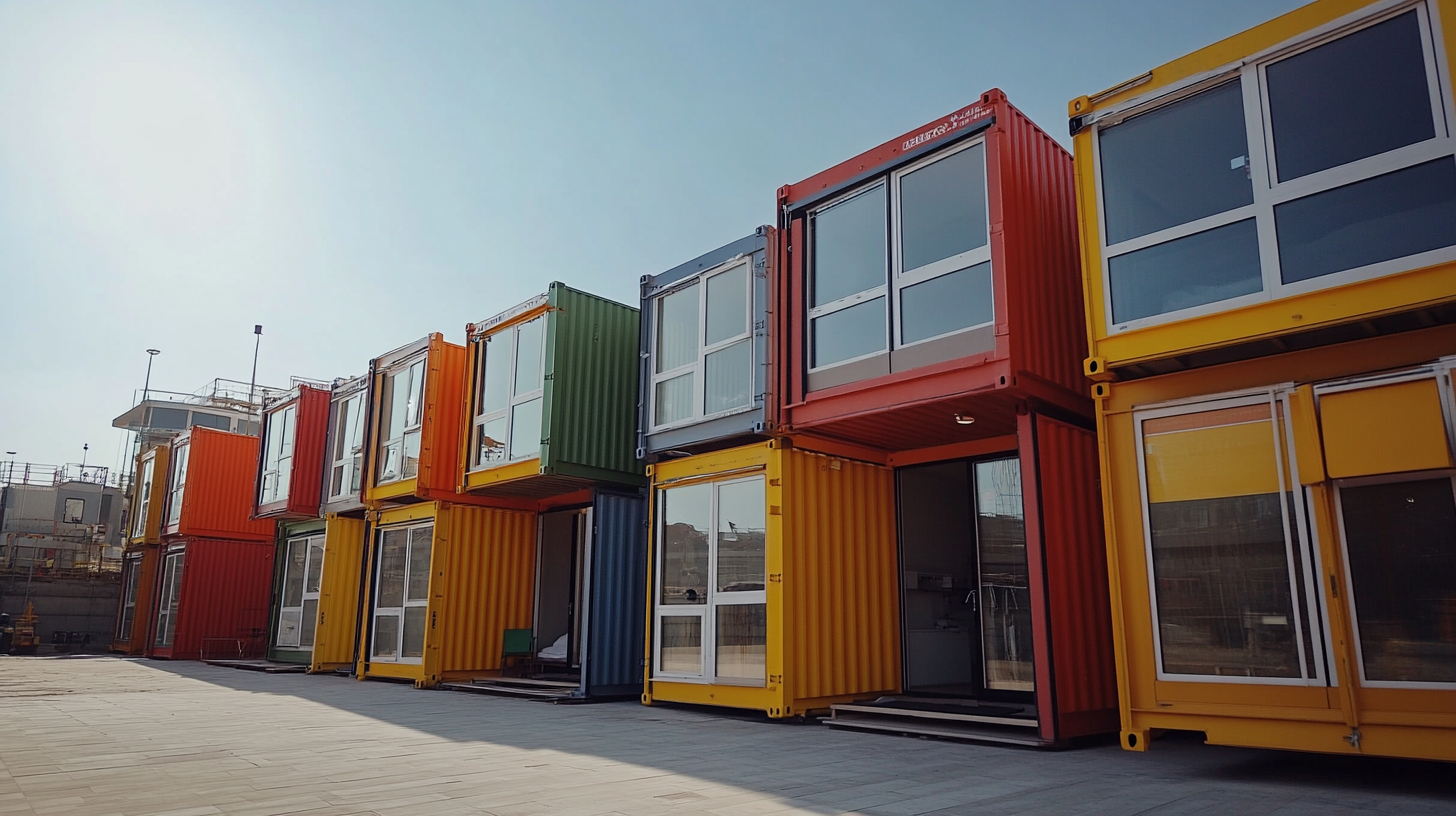In recent years, the construction industry has witnessed a significant shift towards innovative building solutions that not only meet the growing demand for affordable housing but also align with sustainability initiatives. Among these solutions, Modular Container Homes have emerged as a promising alternative to traditional housing. By utilizing repurposed shipping containers, these homes offer a unique blend of durability, versatility, and cost-effectiveness, making them an ideal choice for various applications, from urban infill projects to remote and temporary housing. As global sourcing practices evolve, the benefits of Modular Container Homes are becoming increasingly relevant.
Exploring the advantages of Modular Container Homes reveals a myriad of benefits that can greatly enhance efficiency in global sourcing. Their inherent mobility allows for easy transport and relocation, catering to dynamic market demands. Additionally, the streamlined construction process significantly reduces build time, enabling quicker project delivery. Furthermore, with a focus on eco-conscious building practices, Modular Container Homes are designed to minimize waste and lower the carbon footprint, aligning perfectly with modern sustainability goals. As we delve deeper into this topic, we will uncover how these innovative structures can reshape the landscape of housing and sourcing strategies worldwide.

The rise of modular container homes is transforming global sourcing strategies in various industries. According to a recent report by McKinsey, the modular construction market is projected to reach $130 billion by 2030, reflecting a significant shift from traditional building methods. As businesses face rising construction costs and tight deadlines, modular container homes offer a fast and cost-effective solution. These homes can be prefabricated in a factory setting, significantly reducing on-site construction time by up to 50%.
Moreover, the sustainability aspect of modular container homes aligns perfectly with the growing emphasis on eco-friendly practices in global sourcing. The World Green Building Council states that modular construction can reduce material waste by as much as 30% compared to traditional methods. This reduction not only lowers costs but also meets the increasing demand for sustainable building solutions among consumers and businesses alike.
Additionally, the flexibility of modular container homes makes them an attractive option for companies looking to expand or adapt quickly to market changes. According to a study by the National Institute of Building Sciences, modular buildings can adapt to various needs by allowing for easy relocation and reconfiguration. As businesses aim to streamline their sourcing strategies, these homes provide a practical solution that enhances efficiency while catering to modern lifestyle needs. The integration of technology into these homes further supports smart sourcing, offering features like energy efficiency and smart home capabilities that appeal to a tech-savvy clientele.
Modular container homes have gained significant attention in the quest for sustainable living solutions, offering unique advantages that align with global sourcing needs. One of the key benefits of these homes is their minimal environmental impact compared to traditional construction methods. According to industry reports, shipping containers are largely made of recycled materials, and repurposing them as homes can significantly reduce waste. This process not only lowers the demand for new building materials but also promotes the use of existing resources, thus enhancing sustainability.
Moreover, modular container homes are inherently designed for efficiency. A study demonstrated that using modular construction can reduce costs by up to 20% compared to conventional building practices. The inherent versatility of shipping containers allows for innovative designs that can be tailored to various climates and lifestyles while optimizing energy performance. Additionally, their mobility enables easy relocation, making them suitable for diverse urban and rural settings, which is particularly beneficial in housing projects intended to quickly adapt to shifting demographics.
Sustainability is further emphasized by the reduced carbon footprint associated with modular construction. When combined with energy-efficient technologies, such as solar panels and sustainable insulation materials, these homes can offer a self-sufficient living experience that contributes to a greener planet. Projects like Urban Rigger in Copenhagen exemplify successful implementations of container homes, showcasing how they can meet residential needs while promoting eco-friendly practices. This innovative approach not only addresses affordable housing shortages but also fosters a cultural shift towards more conscious living choices.

Modular container homes have emerged as a prominent solution in the realm of smart global sourcing, particularly due to their cost-effectiveness. Unlike traditional construction methods, modular homes can be produced off-site, significantly reducing labor costs and construction time. This accelerated process not only saves money but also allows for more efficient use of resources, converging perfectly with the principles of sustainable development. As global markets become increasingly interconnected, the ability to source modular components from various locations further enhances affordability and can provide companies with a competitive edge.
In addition to competitive pricing, modular construction offers immense flexibility in design and scalability. Whether for residential use or commercial applications, these homes can be easily adapted to meet the specific needs of different markets and cultures. The ability to rapidly assemble and reconfigure spaces as required makes modular homes an attractive option for businesses looking to establish a presence in diverse regions. Furthermore, this adaptability minimizes the initial investment risk, fostering greater innovation and responsiveness in unpredictable global environments.
With the ongoing challenges in the supply chain and rising prices of traditional building materials, the modular approach presents a sustainable alternative. By investing in modular construction, businesses can benefit from the reduced costs associated with production, transportation, and on-site assembly. This creates an opportunity to deliver quality housing solutions swiftly while meeting the demands of ever-changing market conditions. The efficiency of modular container homes is thus reshaping the narrative of global sourcing, establishing a more resilient and economically viable future in construction.
Modular container homes are transforming the landscape of housing solutions, particularly in the context of global sourcing. These innovative structures are designed to offer enhanced flexibility and adaptability, making them an ideal choice for a rapidly changing world. The modular nature of these homes allows for easy assembly and disassembly, which means they can be relocated with minimal effort. This flexibility is essential for addressing pressing housing shortages, particularly in regions that face natural disasters or have a high rate of urban migration.
Furthermore, the adaptability of modular container homes extends beyond their physical structure. These homes can be customized to meet diverse needs, making them suitable for various demographics, from young professionals to families seeking affordable housing options. The integration of smart technology further elevates their appeal, allowing homeowners to optimize energy use and improve lifestyle convenience. As communities increasingly prioritize sustainable living, modular container homes present an eco-friendly alternative, utilizing recycled materials and energy-efficient designs that cater to the modern-day requirement for sustainable development.
In summary, the benefits of modular container homes lie in their ability to provide effective, flexible, and adaptable housing solutions that respond to the dynamics of global sourcing trends. The innovative design and construction processes not only address immediate housing needs but also align with the broader goals of sustainability and community resilience.
In the realm of modern architecture, modular container homes are redefining innovative design options, making them both trendy and functional. The versatility of container homes allows architects and builders to create unique living spaces that cater to diverse needs. According to a report by Grand View Research, the global modular construction market is expected to reach $157.76 billion by 2023, highlighting a growing trend that emphasizes sustainable and cost-efficient building practices. This boom in modular homes illustrates how they can adapt to various lifestyles, from minimalist living to luxurious retreats.
One of the most appealing aspects of container homes is their aesthetic flexibility. Innovative design options, such as large windows, green roofs, and multi-functional interiors, enable homeowners to personalize their spaces while maintaining functionality. A study published in the Journal of Architecture indicates that natural light significantly enhances the well-being of residents. By integrating large glass elements, container homes can not only improve the indoor environment but also reduce energy consumption, aligning with contemporary eco-friendly practices.
Additionally, container homes can be outfitted with smart technology, making them highly functional living spaces. The integration of smart systems for energy management, security, and climate control is becoming increasingly popular. According to Technavio, the global smart home market is projected to grow at a CAGR of over 25% from 2020 to 2024. This trend opens up exciting possibilities for modular container homes, allowing them to offer advanced features that enhance convenience and sustainability.
As modular container homes continue to evolve, their innovative designs and functionalities are likely to captivate a broader audience, encouraging a shift toward more sustainable living solutions in urban environments.

